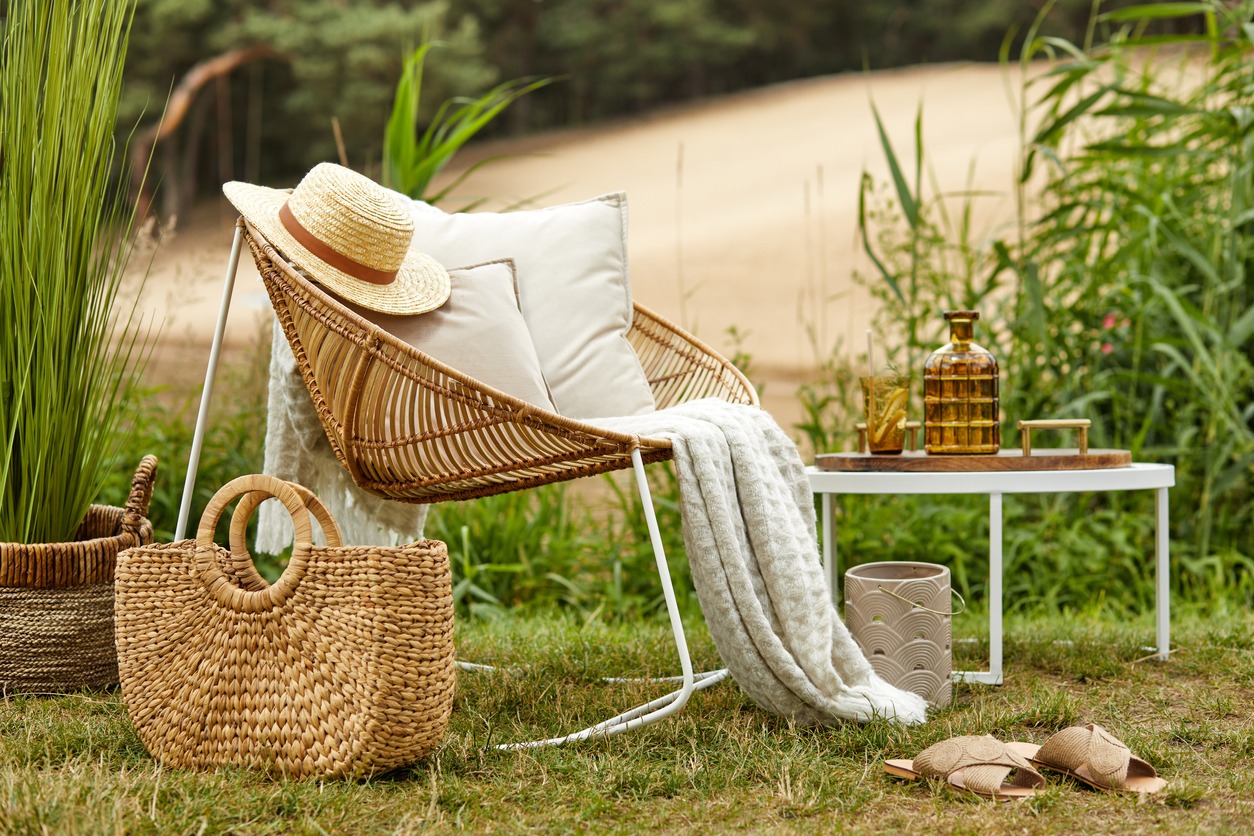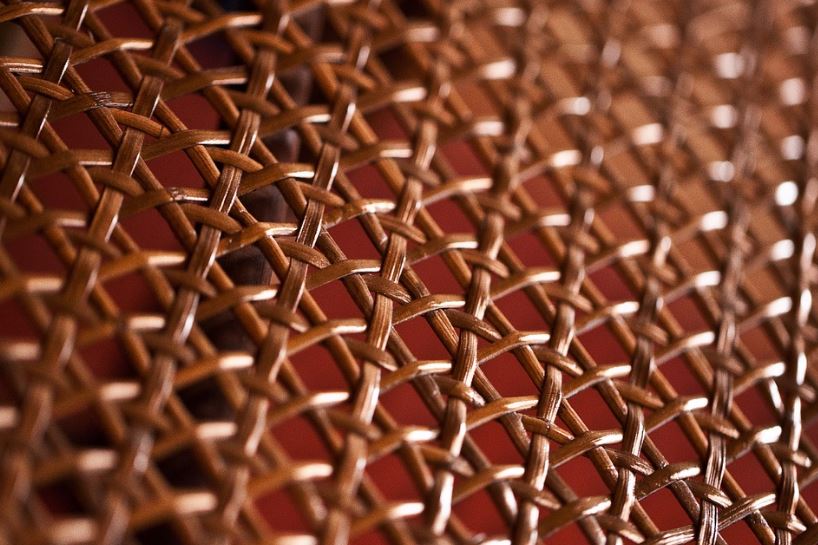Rattan and wicker are two terms that are frequently confused and used interchangeably. This makes determining whether these terms have the same meaning.
To clear up any confusion, rattan and wicker are not the same things. These two terms mean entirely different things.
Rattan is a material, whereas wicker is a weave style. You’ve probably heard the terms used interchangeably because wicker rattan weaves are common in outdoor wicker seating, that is, a design that incorporates rattan into a wicker weave. The first describes the product (rattan), while the second describes the manufacturing process (wicker).
But are there any other distinctions between wicker and rattan aside from that? Continue reading to find out.
What Is Wicker?
Wicker is a weave style commonly used for furniture and baskets. Wicker is an ancient Egyptian technique passed down through generations and is still used in contemporary furniture design.
Archaeologists and scientists have discovered wicker furniture dating back to 3,000 B.C. Wicker baskets, chairs, boxes, and chests have been discovered in the tombs of wealthy pharaohs. The weave’s appeal is distinct and equally creative.
Wicker weaving has experienced a revival in the last century due to the Arts and Crafts Movement, which began in the early 1900s. Many people have worked to preserve this skill by holding weaving workshops and raising awareness about this precious style of weaving.
Wicker grew in popularity over the centuries and exploded in Europe in the Age of Exploration when rattan started to be imported from Asia. Rattan quickly became the preferred material for wickerwork because it is more durable than other materials traditionally used in the region.
Wicker resurfaced in popularity and is still associated with the style today. Wickerwork is now made from natural materials such as willow, reed, rattan, and bamboo, and synthetic fibers such as resin and vinyl.
What Is Rattan?
Rattan is a material used in wicker weaves, a general term for various Old World climbing palms. This material is a naturally growing vine-like species native to Asia, Australia, and Africa’s tropical regions.
Rattan is a liana, which is a woody vine with flexible stems. It has the appearance of bamboo, but it is solid, whereas bamboo is hollow inside.
The skin is stripped away and used for weaving in the production process. Often, the core isn’t wasted and is used to make various types of furniture.
With over 600 different species found in Asia, Australia, and Africa, rattan is a strong fibrous plant similar to bamboo. Because it is lightweight, flexible, durable, and appealing, rattan has been used for furniture. While the fame of these strands has created a high demand, the plants’ sustainability has been called into question.
Rattan stalks cannot regrow if they are cut prematurely. As a result, many synthetic materials were developed to combat rattan exploitation in favor of more environmentally friendly materials.
Rattan, like wood, can be stained or painted, making it a popular material for furniture and other home furnishings. Rattan has historically been used to make sports equipment, wicks for essential oils, weaponry, and homes in rural areas where it grows. However, it is primarily used for wickerwork.
Cane is derived from the outer skin of the rattan vine, whereas rattan furnishings are typically made from the rattan vine’s core. It is commonly woven into the webbing and applied as a decorative finish to wood furniture. Cane is popular for making chair seats because it is both flexible and durable.
Because of its open weave, cane webbing is frequently used to create decorative accents on headboards and cabinet doors. Cane is water-repellent and can be wiped clean of spills without causing any damage, whereas rattan is porous and easily weakened by moisture.
If you’re considering buying rattan for your home garden, take these pluses and minuses of rattan garden furniture? into account first.
Wicker Is a Weave Style, and Rattan Is a Material
One of the most common misconceptions about wicker and rattan is that they are the same material. That is only partially correct: rattan is a material derived from certain palm species. Wicker, on the other hand, is a weave style.
Wicker pieces can be woven from various synthetic and natural materials, including reed, bamboo, and synthetic resin, in addition to rattan. The term “wicker” has encapsulated many types of woven furniture over time.
What Is the Purpose of Rattan and Wicker?
Wicker and rattan have traditionally been used in furniture design. When it comes to rattan, patrons have fallen in love with the product’s flexibility and durability. Rattan is inexpensive and easy to clean (all you need is water and a wash rag) and maintain. Furthermore, because rattan can be used outdoors and indoors, it is an excellent choice for decorating a wide range of environments and rooms, including dining rooms, kitchens, patios, and garden areas.
Rattan can be used in a wide range of designs. Rattan, for example, can be weaved or wrapped around modern, contemporary, classical, or vintage furniture frames.
Rattan furniture is durable, lightweight, stylish, and reasonably priced. It has everything a consumer looks for in garden furniture, which is why it is so popular.
Wicker is another popular material for furniture design, but the biggest distinction is that wicker furniture can be made from various materials. A wicker furniture set, for example, can be made of willows, cane, reeds, straw, and, of course, rattan. The one disadvantage of wicker furniture sets is that they’re not as durable or easy to clean as rattan, but this depends on the furniture set’s material.
Wicker can be used to make stools, chairs, couches, benches, and much more in terms of furniture design. Wicker, like rattan, is woven around a frame to produce specific types of furniture.
Rattan Furniture for Indoors, Synthetic Wicker for Outdoors
Wicker furniture is prominent for outdoor use because it is lightweight and portable. While rattan is a long-lasting material traditionally utilized for patio furniture, it is not the best option for outdoor use because it’s not water-resistant. When it rains, keep the rattan furniture inside or cover it. On the other hand, synthetic rattan is an excellent outdoor material.




